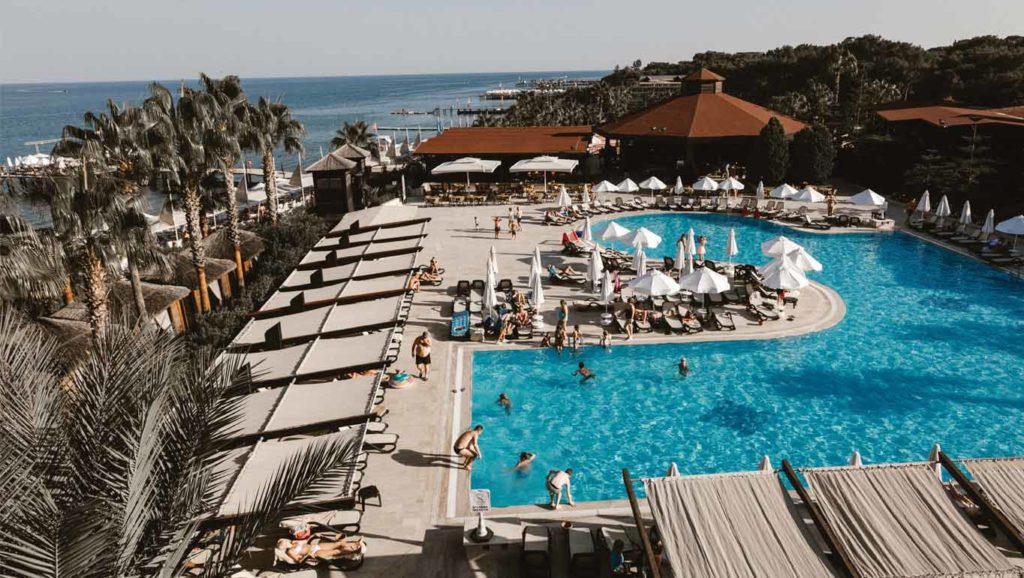After two of the most challenging years in the history of the sector, with international travel down by 70% on pre-pandemic levels, strong pent-up demand is being unleashed and people are once again traveling for both work and leisure.
The lifting of COVID-19-related travel restrictions – by the end of October more than 100 destinations worldwide had removed all restrictions – has translated into growing demand especially in the Americas, the Middle East and Africa. While the sector’s restart in Asia is still lagging behind, the re-opening of many destinations in recent months brings a positive outlook for the rest of the year.
As well as tourist arrival numbers rising, World Tourism Organization (UNWTO) is also seeing increases in the amount of money being spent by tourists. That increase, from major source markets like Belgium, France and Germany, for example, is now almost back to pre-pandemic levels, bringing hope for the many businesses and livelihoods that are dependent on our sector.
Tourism all year round – creating opportunities for all
From the very start of the crisis, UNWTO has recognized that the sudden and unexpected pause in international travel represents a unique opportunity to rethink tourism – how it works, and who benefits.
Tourism has already established itself as a key driver of development, job creation and opportunities for many economies and communities. Prior to the pandemic, the sector accounted for $3.5 trilltion in direct tourism GDP, 1.5 billion international travelers and 7% of all world exports. And indeed, the relevance of the sector to economic and social well-being everywhere has never been more evident, as was made clear by its very absence over the course of almost two years’.
However, as tourism restarts, this window of opportunity to do more and to do better is closing. Now is the time to ensure that the many and varied benefits the sector offers are shared as widely and fairly as possible. As the UN Secretary-General said in his Policy Brief entitled COVID-19 and Transforming Tourism, “while sustaining the livelihoods dependent on the sector must be a priority, rebuilding tourism is also an opportunity for transformation with a focus on leveraging its impact on destinations visited and building more resilient communities and businesses through innovation, digitalization, sustainability, and partnerships.”
One of the pillars of tourism transformation is the need to create a framework that will serve to reduce the concentration of tourism demand both in time (seasonality) and in space through the dispersal of tourism within territories and the promotion of diverse destinations, for example promoting rural destinations. Advancing such policies of diversification bring dual benefits: on the one hand, it can reduce pressure on popular destinations, including popular cities and resorts. At the same time, it can also promote tourism year-round, ensuring the economic benefits, particularly to rural communities, are more consistent and reliable.
In this respect, the crisis has brought an increased focus on policies to create new and more sustainable experiences in many destinations. Working with the Indonesia Presidency of the G20, UNWTO has developed a set of guidelines that aim to support countries consolidating their recovery on a people-centered approach. The G20 Bali Guidelines for Strengthening Communities and MSMEs as Tourism Transformation Agents include several examples of how countries have developed and implemented policies to support this agenda.

To take just one example, in France, the government has launched a major plan to support investment called ‘Avenir Montagnes’, mobilizing nearly €650 million of public funds (from both the state and regions), which will generate investments of €1.8 billion. The plan aims to respond to the specific problems of the mountain regions by diversifying the tourism offering, supporting ecological sustainability and the transition to cleaner energy and, finally, breathing new life into communities hit hard by multiple crises. An additional effort to promote the mountain regions in France and overseas by Atout France – the French Tourism Board – has also been designed to accelerate the recovery of tourism activity and associated revenues.

In the same spirit, in 2021, UNWTO launched the Best Tourism Villages Initiative. The Best Tourism Villages by UNWTO was launched to advance the role of tourism in safeguarding rural villages, along with their landscapes, natural and cultural diversity, and their local values and activities, including local gastronomy. These villages stand out for their natural and cultural resources, besides their innovative and transformative actions and commitment to the development of tourism in line with the Sustainable Development Goals (SDGs). In many cases, the initiative showcases destinations that can be visited whatever the season – again, spreading the benefits more evenly and consistently, reducing the pressure of peak seasons and providing year-round livelihoods for residents.
The tourism of the future needs to be more resilient, diverse and inclusive. Increasingly, the accessibility to traditional winter destinations will bring a myriad of social and economic benefits. At the same time, promoting new winter tourism destinations will bolster resilience, while further enhancing the sector’s contribution to the wider UN agenda and the advancement of the Sustainable Development Goals.



